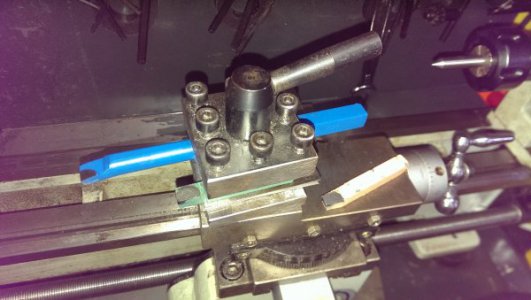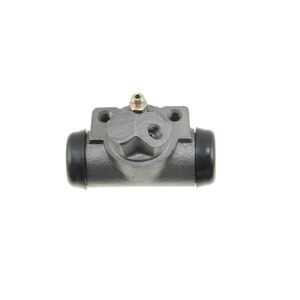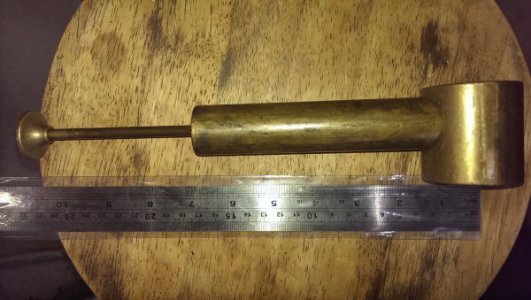- Joined
- Apr 4, 2016
- Messages
- 72
I use boring bars like this set. They come in progressive diameter range/shank sizes. They all use replaceable CCMT 21.51 carbide insert cutters. The shanks have flats milled on them so that they can be secured in typical tool post holders. You can get these boring bars quite inexpensively from a variety of tool suppliers, or Ebay, Aliexpress etc. Asian clones but I think they are fine. The inserts can also be found quite reasonably priced & come in a variety of nose radius, coated, uncoated etc. And I use the exact same inserts in conventional lathe cutting tools.
OTOH, there is nothing wrong with the classic boring bar that uses HSS bits. Cost wise, its almost getting to be coin flip these days. HSS requires you to grind & dress your own bits. But this assembly also gives flexibility to make your own cutter profiles. For straight boring I usually grab the insert style.
Drilling is a roughing operation intending to remove bulk material. Its not really all that accurate compared to boring. Big drills can push small lathes on a few fronts: power requirement, lathe/saddle rigidity, even clamping retention of small chucks. If the lips aren't ground accurately the hole can cut unequally & wander. Same goes for your tailstock alignment & chuck quality. Reamers seem like a great solution and they can be, but they can also get spendy in bigger diameters & also quite long with MT/tang configuration for small machines. And a reamer can only do one bore size. You can achieve very close to this finish & accuracy with these boring tools mentioned.
For model engine liners/cylinders, use the biggest, most rigid bar you can accommodate in the hole (with swarf clearance etc). As you approach the final ID, alter the traverse feed (so it resists tracking the previous cut) & take the same number of spring passes with carriage locked. Make sure temp has stabilized & then measure. The last thou on typical engines or so is best done with lapping tools for both dimensional accuracy & surface finish. Your O-ring seal is much more tolerant than typical ring-less 2-stroke pistons or conventional ringed pistons, but its not that much extra work to achieve a superior liner & it will run that much better. I can point you to some lapping links on model engine forums. Some pics of tooling & my radial engine build (my first engine so if I can do it so can you!
Thank you for your long and comprehensive response. Going on this I think I absolutely need to shell out a little more on a boring bar set and try all over again. I see in the images the boring bar is in a quick mount, I don't have one so am limited to std 8mm shank, 10mm tools I know sit the cutter above midpoint. Second investment may be tool holder upgrade(s). At this stage I am wondering still if the money isn't better spent on that 12x24 secondhand I have my eye on.
Maybe I should make this in a softer material, see how it all sits, I plan a number of changes anyway and it all comes apart easily so parts will interchange.
Very impressed by your images of the cylinder, nice cooling fin work too. Thanks for posting.




